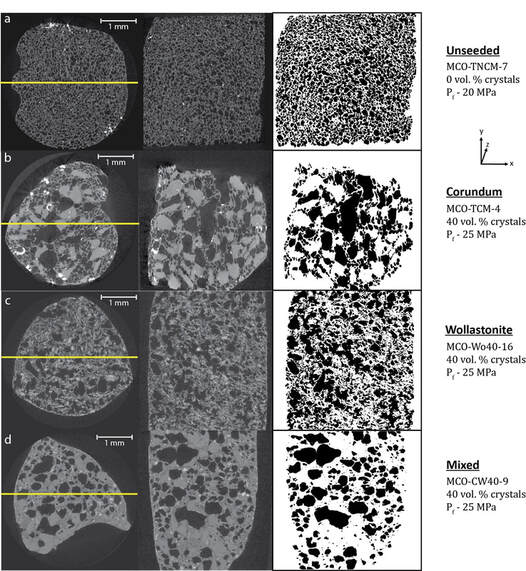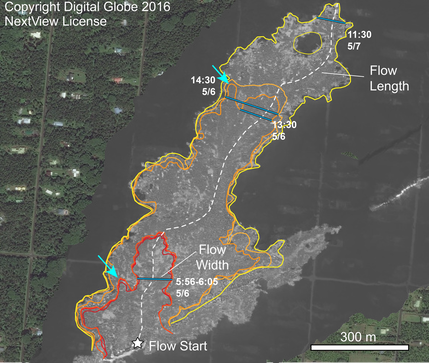Bubble-crystal interactions during magma degassing

One of the critical processes that controls volcanic eruption style is exsolution of volatiles (e.g., H2O, CO2) from a melt, or magma degassing. The exsolved, pressurized volatiles provide much of the driving force for explosive volcanic eruptions. In addition to melt and bubbles, many magmas also contain crystals, and bubbles will interact with crystals during degassing. One of the important steps in the degassing process is the formation of an interconnected, permeable bubble network as that allows pressurized volatiles to escape from the system. I have primarily focused on the influence of crystals on this particular step of magma degassing, though certain crystal phases also promote nucleation of bubbles very early on in the degassing process.
I have conducted decompression experiments at the University of Alaska Fairbanks, in collaboration with Jess Larsen and Nate Graham, to examine these bubble-crystal interactions during magma degassing. My experiments focused on the influence of equant crystals (see panel b to the right), while experiments led by Nate Graham focused on elongate crystals (panel c to the right) and mixtures of elongate and equant crystals (panel d to the right). In all cases we find that the presence of crystals promotes bubble coalescence earlier in the degassing process and the formation of permeability, as compared to the crystal free case (panel a to the right). However, the shapes of the crystals influences the structure of the permeable network. Take a look at the stark differences in the bubble textures (bubbles are in black) in the far right column!
If interested in learning more, take a look at deGraffenried et al. (2019) and Graham et al. (2023)!
Figure to the right is from Graham et al. (2023), using some data from deGraffenried et al. (2019).
I have conducted decompression experiments at the University of Alaska Fairbanks, in collaboration with Jess Larsen and Nate Graham, to examine these bubble-crystal interactions during magma degassing. My experiments focused on the influence of equant crystals (see panel b to the right), while experiments led by Nate Graham focused on elongate crystals (panel c to the right) and mixtures of elongate and equant crystals (panel d to the right). In all cases we find that the presence of crystals promotes bubble coalescence earlier in the degassing process and the formation of permeability, as compared to the crystal free case (panel a to the right). However, the shapes of the crystals influences the structure of the permeable network. Take a look at the stark differences in the bubble textures (bubbles are in black) in the far right column!
If interested in learning more, take a look at deGraffenried et al. (2019) and Graham et al. (2023)!
Figure to the right is from Graham et al. (2023), using some data from deGraffenried et al. (2019).


